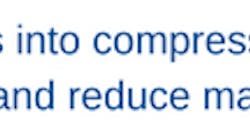In the September 2017 issue of Plant Services, I wrote about how the federal government published regulations to cover the testing of rotary screw compressors but had failed to finalize the regulations on compressor efficiency standards. That left the industry holding its breath, waiting to see whether the test regulations would be withdrawn or left standing. The industry was/is also concerned about whether there will be a federal efficiency standard. What follows is an update on where we stand today…maybe.
As of early February, the Washington state legislature has a bill pending (HB 2327) that would set a state energy-efficiency standard for rotary screw air compressors. That bill follows the efficiency levels found in the Notice of Proposed Regulation that the federal government never published in the Federal Register. California has made it known that it also plans to introduce a state energy-efficiency standard in 2018. Although there is no current bill in the legislature, it is likely that California also will use what would have been the federal efficiency levels.
States that decide to regulate compressor efficiency have a fairly wide open field in which to play. If they regulate rotary screw compressors, they will have to use the test procedures that were published in the Federal Register in January 2017. They could, however, set the efficiency standards anywhere they like. If a state also decides to regulate the efficiency of reciprocating compressors or centrifugal compressors or any technology other than rotary screw compressors, it will have to come up with its own testing standards. That will not be an easy task unless a state adopts current international testing standards with minimal changes. The real challenge when setting standards for other technologies is that there is no pool of confirmed performance data similar to what exists with the third-party verification program that CAGI runs for rotary screw compressors. States would either have to purchase and test a large number of different compressor models or rely on manufacturers’ published data, which is sometimes based on different testing conditions and procedures.
So, the “maybe” in the title of the last article should now read “sort of”: We “sort of” have a regulation for…something. Expect another update in a few months…maybe.
